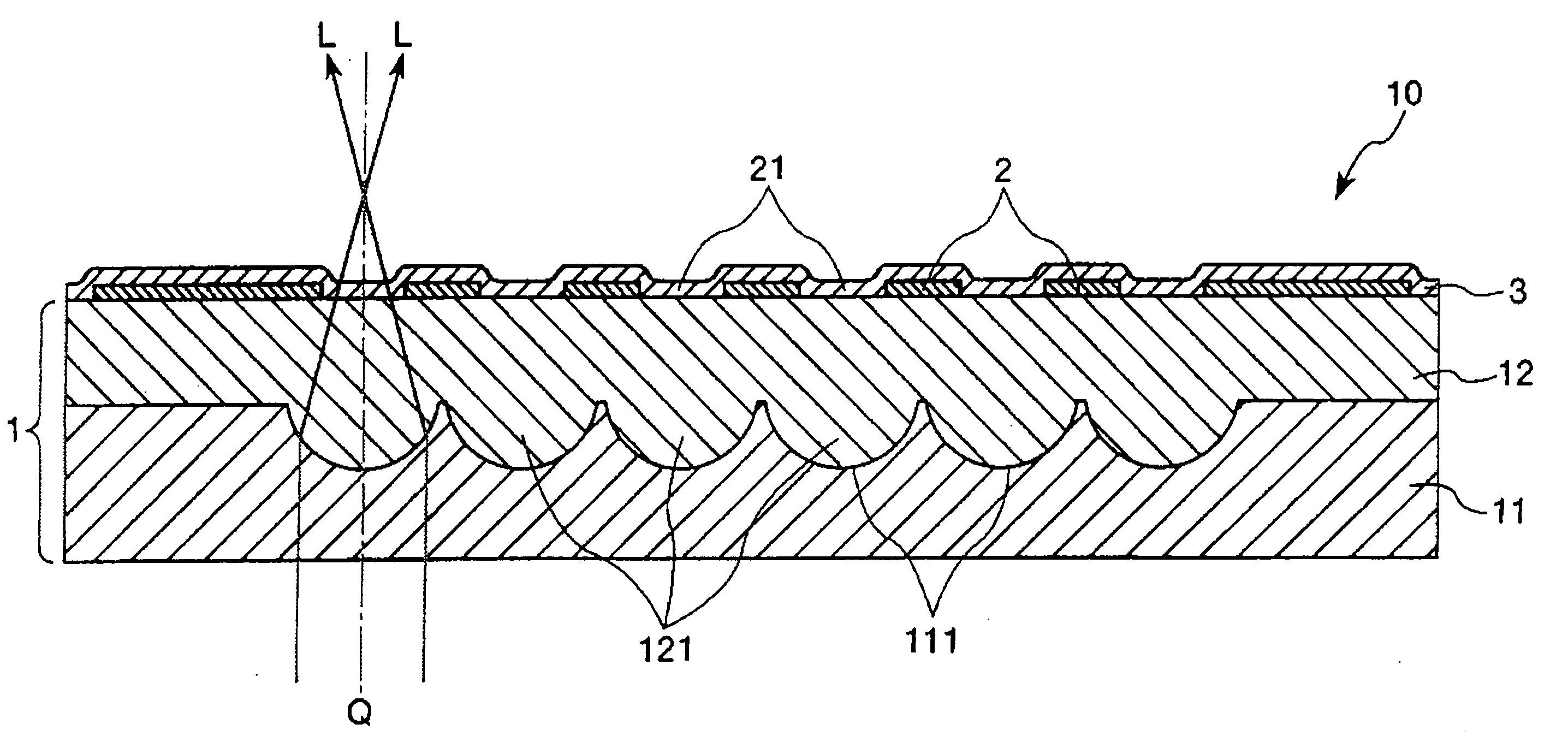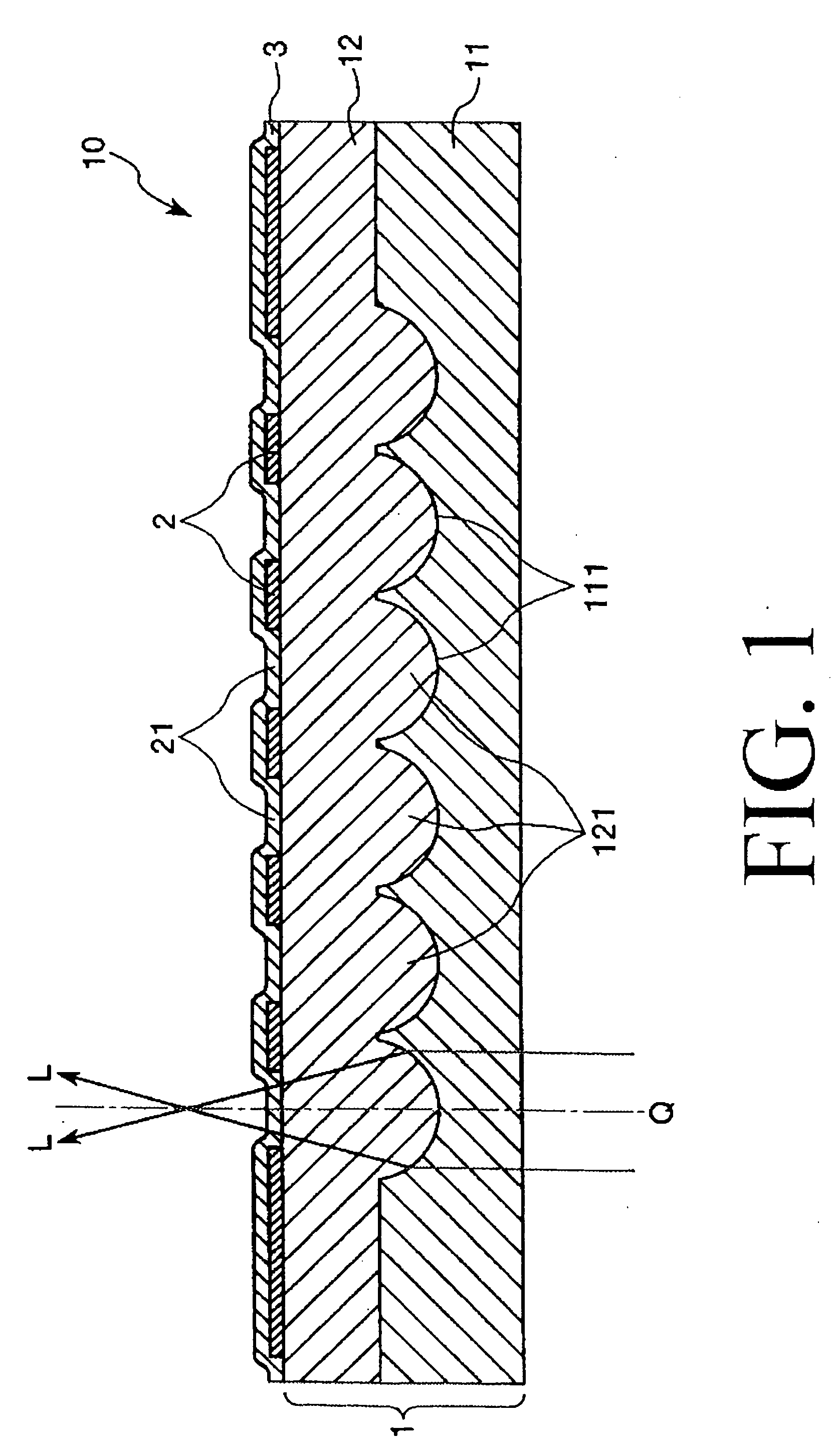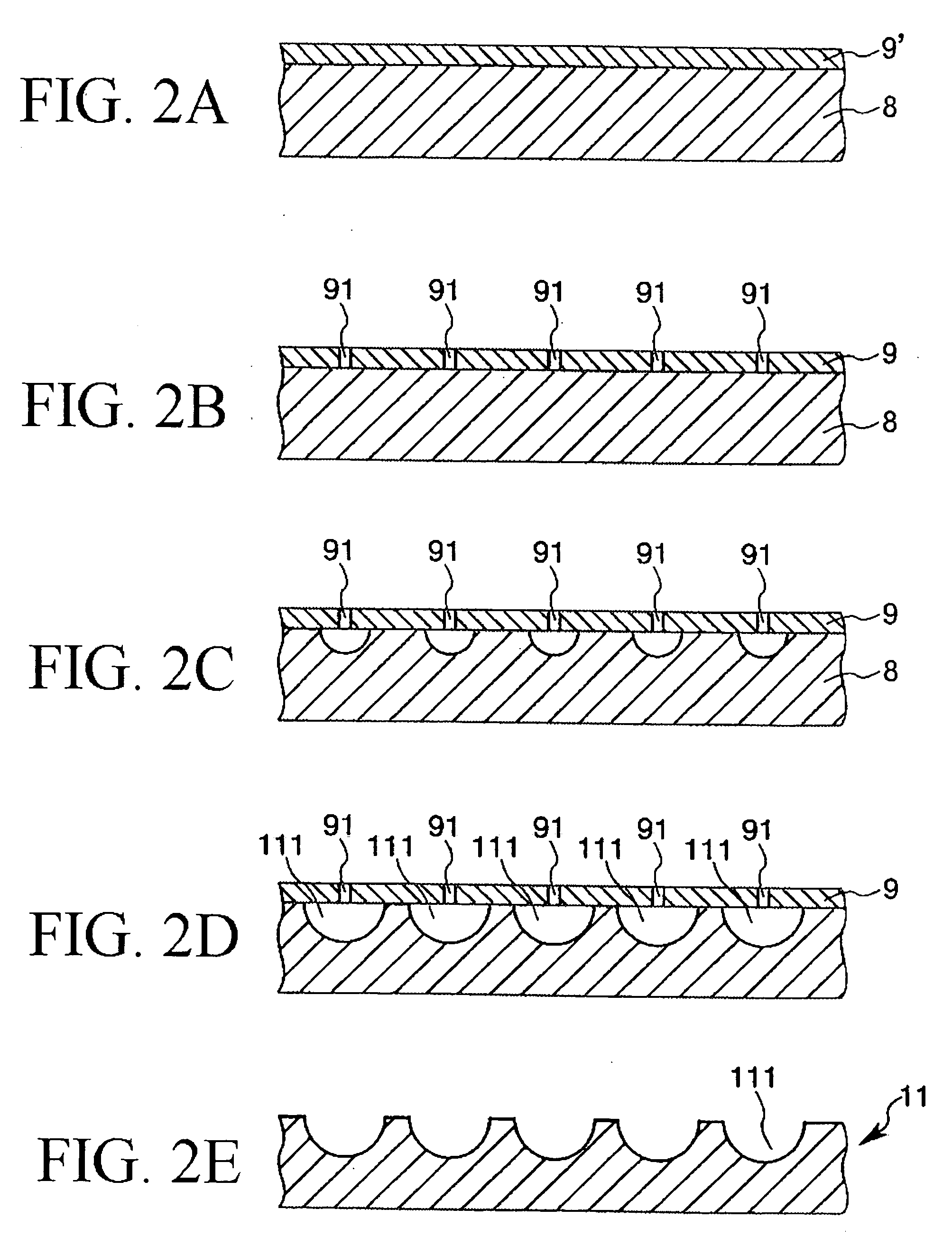Microlens substrate, a liquid crystal panel and a projection type display apparatus
a liquid crystal panel and microlens technology, applied in non-linear optics, instruments, optics, etc., can solve the problems of aging deterioration in such liquid crystal panels, general deterioration of photocuring resin materials, and difficulty in obtaining opposed substrates for liquid crystal panels having sufficient durability, etc., to achieve excellent optical characteristics and durability.
- Summary
- Abstract
- Description
- Claims
- Application Information
AI Technical Summary
Benefits of technology
Problems solved by technology
Method used
Image
Examples
example
Example 1
[0190] A substrate with concave portions equipped with a plurality of concave portions was manufactured, and then a microlens substrate was manufactured using the substrate with concave portions in the following manner.
[0191]
[0192] First, a quartz glass substrate (which has an index of refraction of 1.46) having a thickness of 1.2 mm was prepared as a glass substrate.
[0193] The quartz glass substrate was soaked in a cleaning liquid (that is, a mixture of 80% sulfuric acid solution and 20% hydrogen peroxide solution) heated to 85° C. to be washed, thereby cleaning its surface.
[0194] Next, Cr films each having a thickness of 0.03 μm were formed on the quartz glass substrate by means of a spattering method. Namely, a film for forming a mask and a rear face protective film formed of the Cr films were formed on the both major surfaces of the quartz glass substrate.
[0195] Next, a laser machining was carried out with respect to the film for forming a mask, whereby a large num...
examples 2 and 3
[0213] By changing the firming conditions of the initial holes with respect to the film for forming a mask upon manufacturing the substrate with concave portions, the etching conditions and the composition, the composition of an organic-inorganic composite material (epoxy resin-silica composite material) constituting the convex lens substrate, and the property thereof were changed. In this way, microlens substrates (total 100 pieces) were manufactured in a manner similar to that in Example 1 described above except for the above points. In this case, as the spacers in each of Examples 2 and 3, ones formed of the same material as the cured object of the composition were used.
example 4
[0214]
[0215] First, a substrate with concave portions was manufactured in the same manner as that in Example 1.
[0216]
[0217] Next, a composition having fluidity is supplied to the surface of the substrate with concave portions manufactured as described above on which the concave portions are formed. As the composition, one including: an organic-inorganic composite material (acryl based resin-silica composite material) containing polymethylmethacrylate as an organic component and silica as an inorganic component; and methanol as a solvent was used. The viscosity of the composition at room temperature (20° C.) was 1000 mPa·s.
[0218] Further, at this time, in addition to the composition, spacers formed of the organic-inorganic composite material (same as the organic-inorganic composite material as the cured object of the composition) are supplied onto the substrate with concave portions. The spacers each having 30 μm in diameter and a substantially spherical shape was used.
[0219]
[0220...
PUM
| Property | Measurement | Unit |
|---|---|---|
| wavelength | aaaaa | aaaaa |
| light transmittance | aaaaa | aaaaa |
| wavelength | aaaaa | aaaaa |
Abstract
Description
Claims
Application Information
 Login to View More
Login to View More - R&D
- Intellectual Property
- Life Sciences
- Materials
- Tech Scout
- Unparalleled Data Quality
- Higher Quality Content
- 60% Fewer Hallucinations
Browse by: Latest US Patents, China's latest patents, Technical Efficacy Thesaurus, Application Domain, Technology Topic, Popular Technical Reports.
© 2025 PatSnap. All rights reserved.Legal|Privacy policy|Modern Slavery Act Transparency Statement|Sitemap|About US| Contact US: help@patsnap.com



